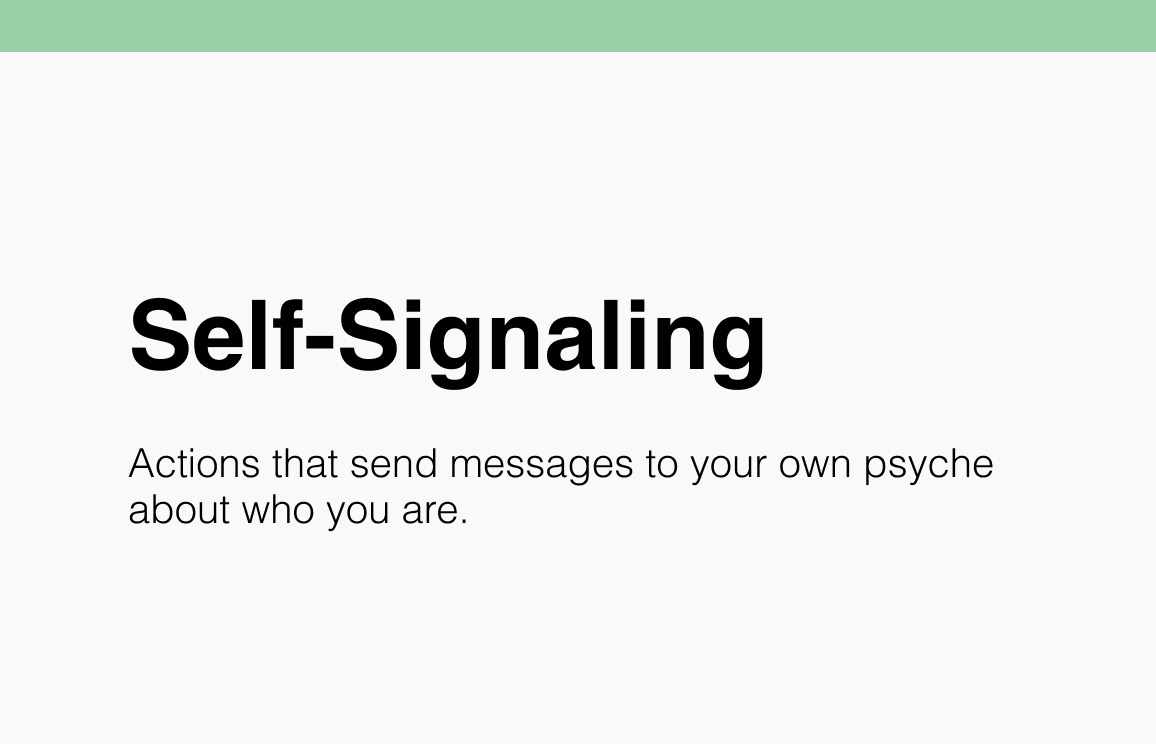20 Things You Should Know About Self-Signaling
Enhance your personal growth and behavioral strategies with these 20 insights on Self-Signaling—what it is, why it matters, and how you can harness it to reinforce your identity, boost your confidence, and drive positive change. Learn how your actions serve as messages to yourself, shaping your self-perception and guiding future behavior.
1. What Is Self-Signaling?
Self-Signaling is the process by which your behaviors and choices send messages to yourself about who you are and what you value, influencing your self-image and future actions.
2. The Concept Behind Self-Signaling
Every decision you make acts as evidence of your identity. Your behaviors confirm or challenge your self-concept, helping you understand and shape who you become.
3. Reinforcing Your Identity
When you engage in actions that align with your values, you signal to yourself that you embody those qualities, strengthening your sense of self.
4. The Role of Consistency
Repeated behaviors that reflect your desired identity reinforce positive messages to yourself. Consistency between your actions and values is key to building a strong self-image.
5. Motivating Positive Change
By deliberately choosing actions that align with your long-term goals, you can use self-signaling to motivate and sustain positive change.
6. Everyday Examples
Simple actions—like exercising, eating healthily, or dedicating time to a hobby—send signals about your priorities and commitment to personal growth.
7. Enhancing Self-Esteem
Positive self-signals can boost your self-esteem by reinforcing the belief that you are capable, disciplined, and true to your values.
8. Impact on Decision-Making
Reflecting on your actions as signals helps you make choices that are in line with your long-term aspirations, leading to more intentional decision-making.
9. Self-Signaling and Habit Formation
When you consistently perform behaviors that align with your identity, these actions become habitual, solidifying your self-concept over time.
10. The Power of Reflection
Taking time to reflect on your behaviors and the signals they send can help you understand your motivations and adjust your actions if needed.
11. Using Rewards to Signal Success
Rewarding yourself for positive behaviors reinforces self-signals that you are on the right track, further motivating you to continue those actions.
12. Public Commitments Amplify Self-Signaling
Sharing your goals with others can strengthen self-signaling. Public commitments add accountability and reinforce your internal messages.
13. Overcoming Negative Self-Signals
Be mindful of actions that might signal a negative self-image. Recognize and adjust behaviors that contribute to self-doubt or self-sabotage.
14. The Role of Mindfulness
Mindfulness increases your awareness of your actions and their impact on your self-perception, helping you to choose behaviors that support your desired identity.
15. Self-Signaling and Self-Control
By aligning your actions with your long-term goals, self-signaling supports self-control, making it easier to resist short-term temptations.
16. Integrating Self-Signaling with Goal Setting
When setting goals, consider how each action you take signals your commitment and progress, reinforcing your dedication to those goals.
17. Adaptive Self-Perception
Self-signaling is dynamic. As you grow and evolve, the signals you send yourself help adapt and reshape your self-image in a positive way.
18. The Science Behind Self-Signaling
Research in psychology shows that our behaviors inform our self-concept. This feedback loop helps drive behavior change by aligning actions with personal identity.
19. Practical Strategies for Daily Life
Incorporate this process into your routine by choosing actions that reflect your values, then taking time to acknowledge and celebrate those choices.
20. Related Topics to Explore
- Self-Efficacy Calibration – Align your confidence with your capabilities.
- Intrinsic Motivation Cultivation – Understand how internal drives fuel sustainable behavior change.
- Metacognitive Monitoring – Enhance your awareness of your thought processes to improve self-signaling.
- Adaptive Confidence – Build a confidence that evolves with continuous personal growth.
- Reframing Failure as Data – Turn setbacks into signals for future improvement.
Quick Tips to Boost Your Self-Signaling
- Set Clear Intentions: Define your core values and long-term goals to guide your actions and strengthen your self-image.
- Reflect Regularly: Take a few minutes each day to consider how your actions align with your desired identity.
- Reward Positive Behavior: Use small rewards to reinforce actions that support your goals, signaling success to yourself.
- Maintain Consistency: Build routines that consistently reflect your values, reinforcing the positive messages you send yourself.
- Share Your Journey: Consider discussing your goals and progress with supportive peers to amplify the effects of self-signaling.
Embrace these insights and tips to harness the power of Self-Signaling, transforming your everyday actions into powerful affirmations of your identity and driving you toward lasting personal success!

